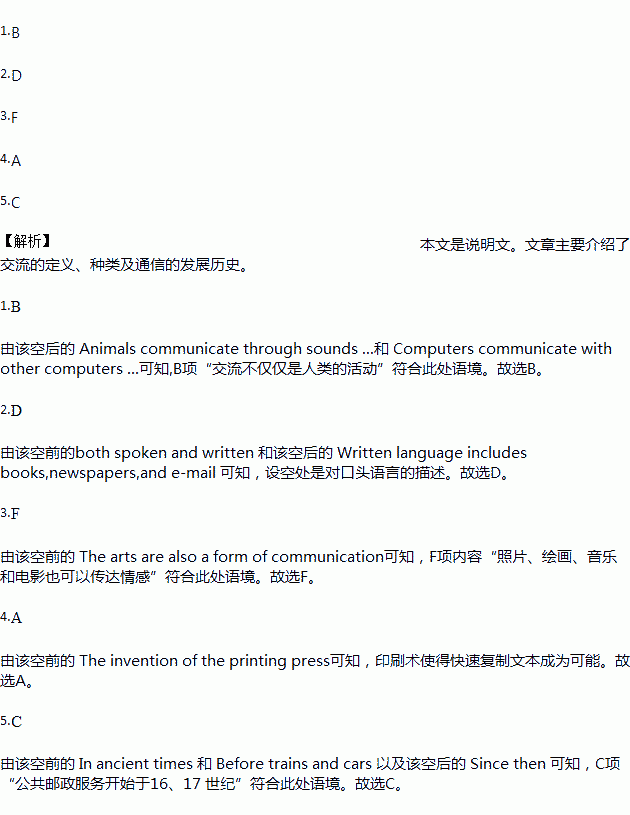题目内容

Communication
People learn and share information through communication. All forms of communication have one thing in common: the sending and receiving of a message. Using different kinds of communication, people can pass along their ideas and feelings to just one person or to millions.
1. Animals communicate through sounds, scents (气味), and acts. Computers communicate with other computers through electronic networks.
People communicate through language, both spoken and written. 2. Written language includes books, newspapers, and e-mail.
People also communicate without words. Body and face movements show feelings. Deaf people use hand movements called sign language.
The arts are also a form of communication. 3.
The first modern humans appeared about 200,000 years ago. They likely used sounds, movements, and then speech. About 30,000 years ago humans started making paintings and sculptures on the walls of caves.
Humans invented writing more than 5,000 years ago. The ancient Sumerian people developed the first known script (文字), called cuneiform (楔形文字). Then the ancient Egyptians developed a picture-based writing called hieroglyphics (象形文字). The invention of the printing press in the 1400s was a major advance in written communication. 4.
Telecommunication is communication over long distances. In ancient times pigeons carried written messages. Before trains and cars, messengers on foot or on horseback carried letters. 5. Since then, telecommunication has become faster thanks to television, telephones, and the Internet.
A. It let printers quickly make copies of a text.
B. Communication is not only a human activity.
C. Public postal services started in the 1500s and 1600s.
D. Spoken language includes conversations and speeches.
E. Spoken communication is dependent on a number of factors.
F. Photographs, paintings, music, and movies can communicate feelings as well as facts.
G. Modern technologies for long-distance communication usually involve electrical technologies.

